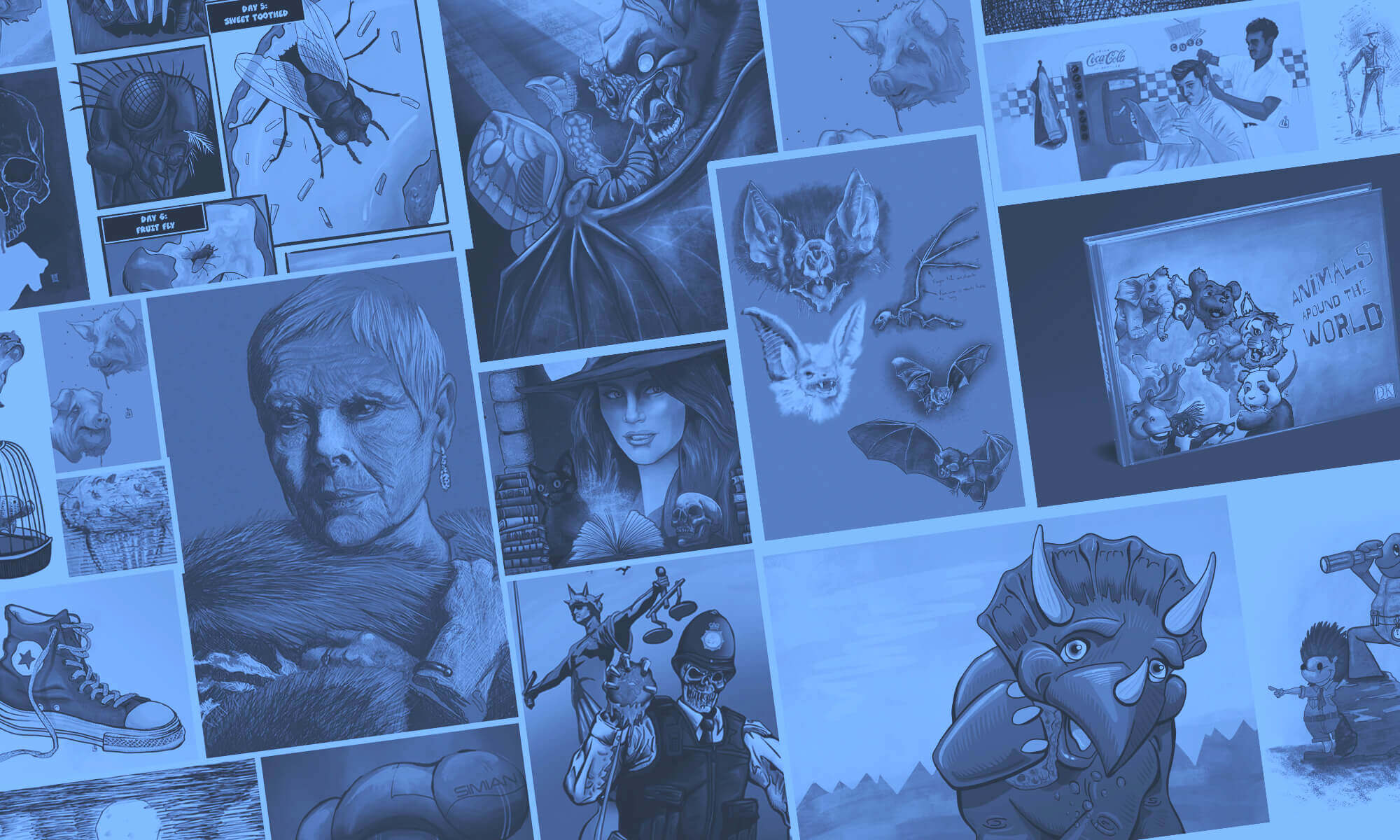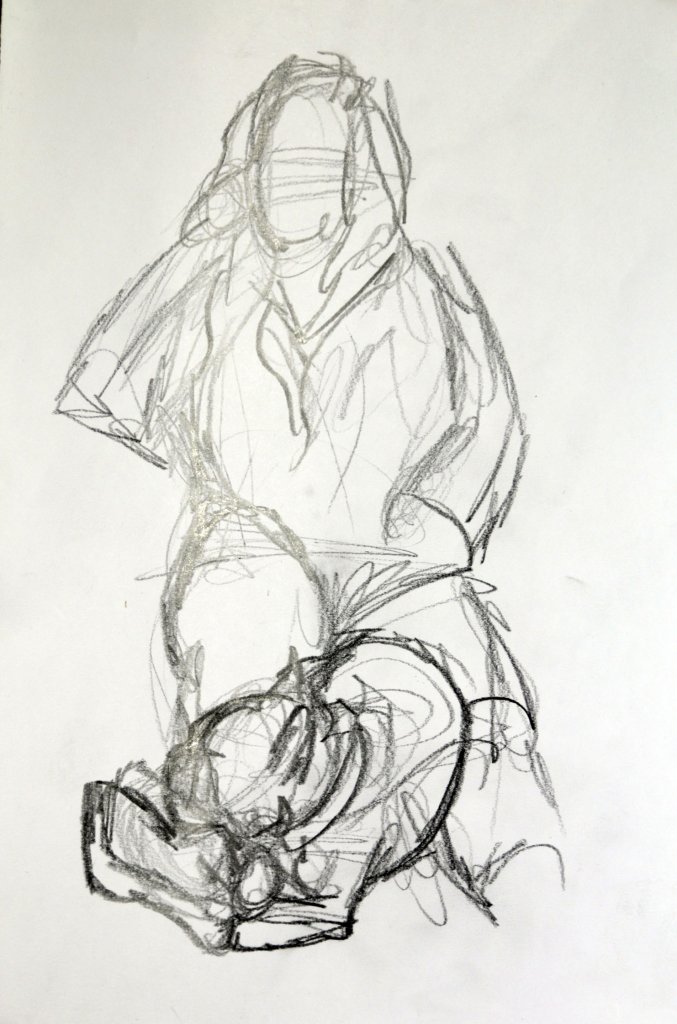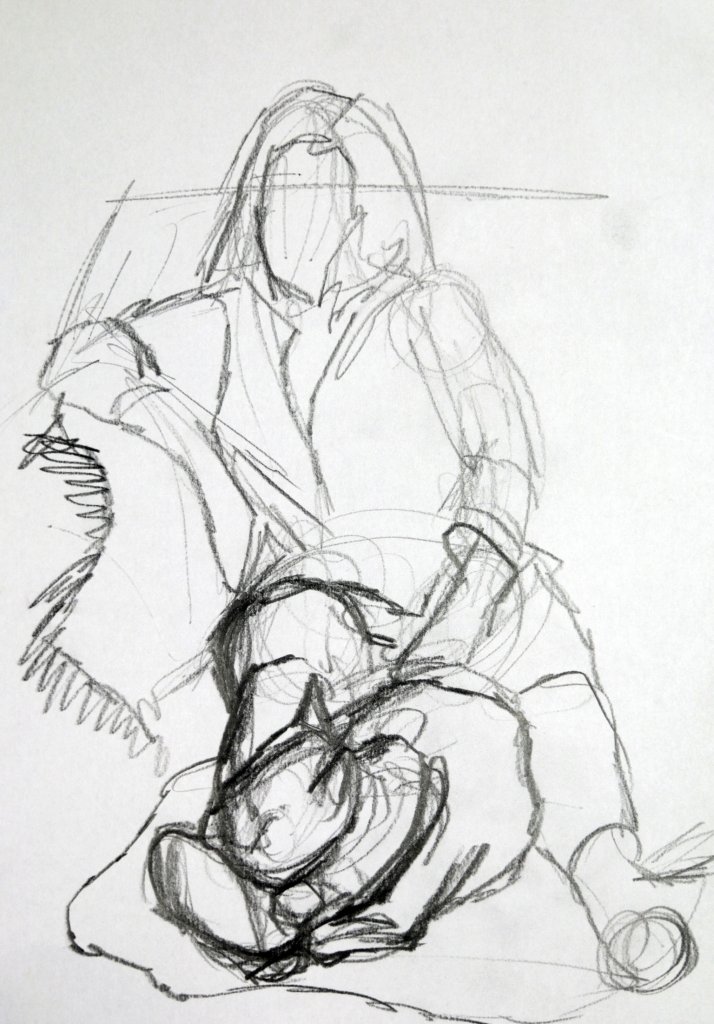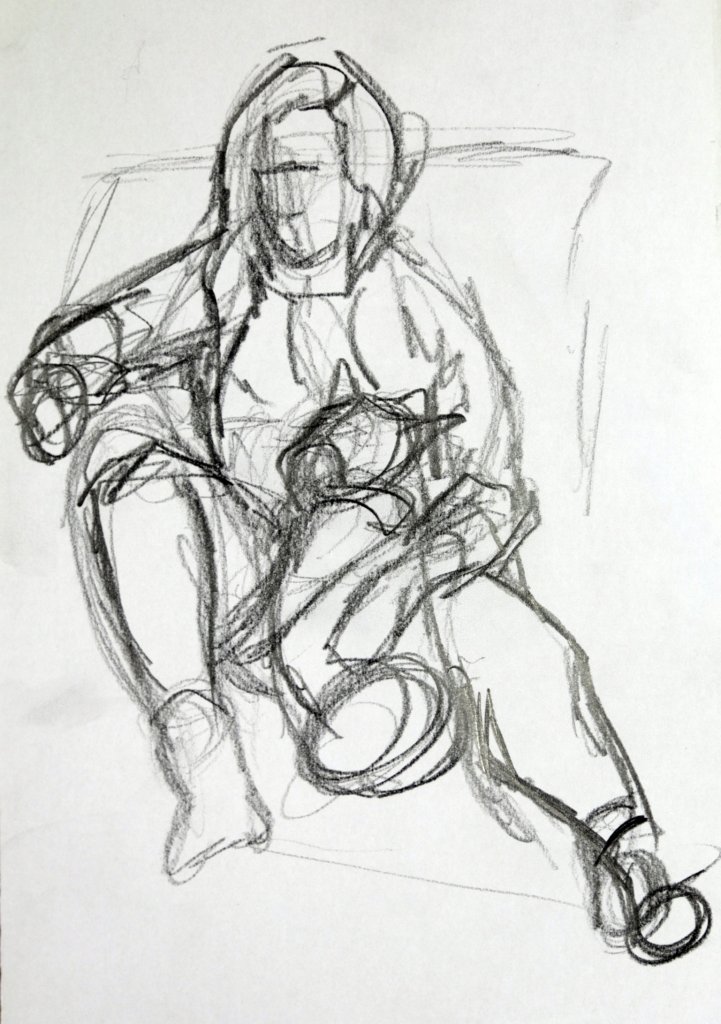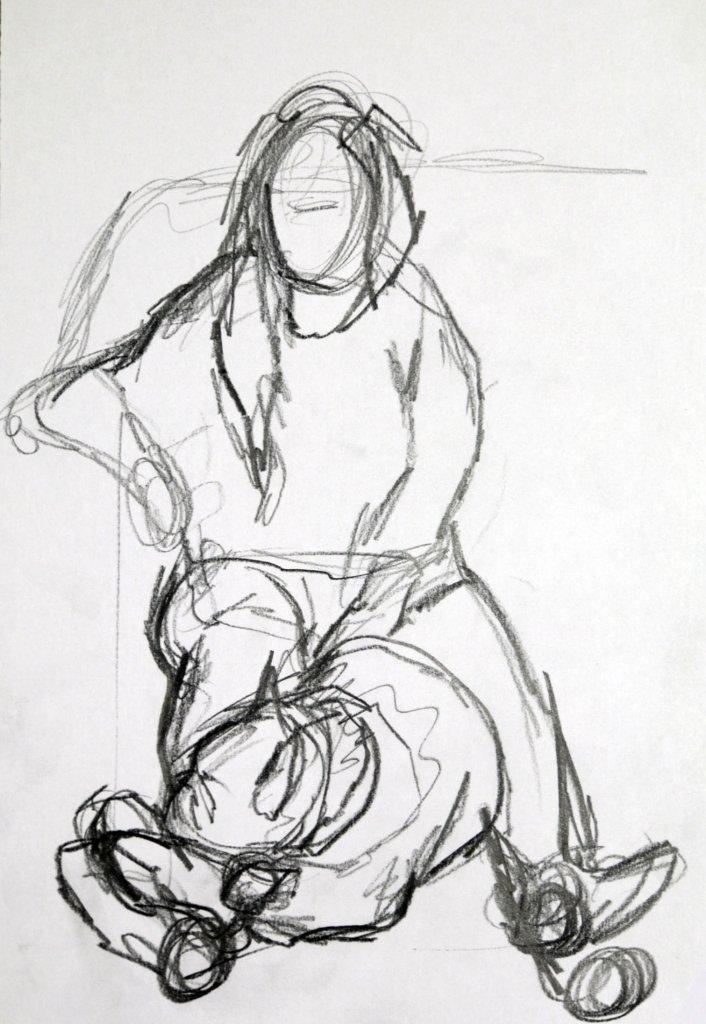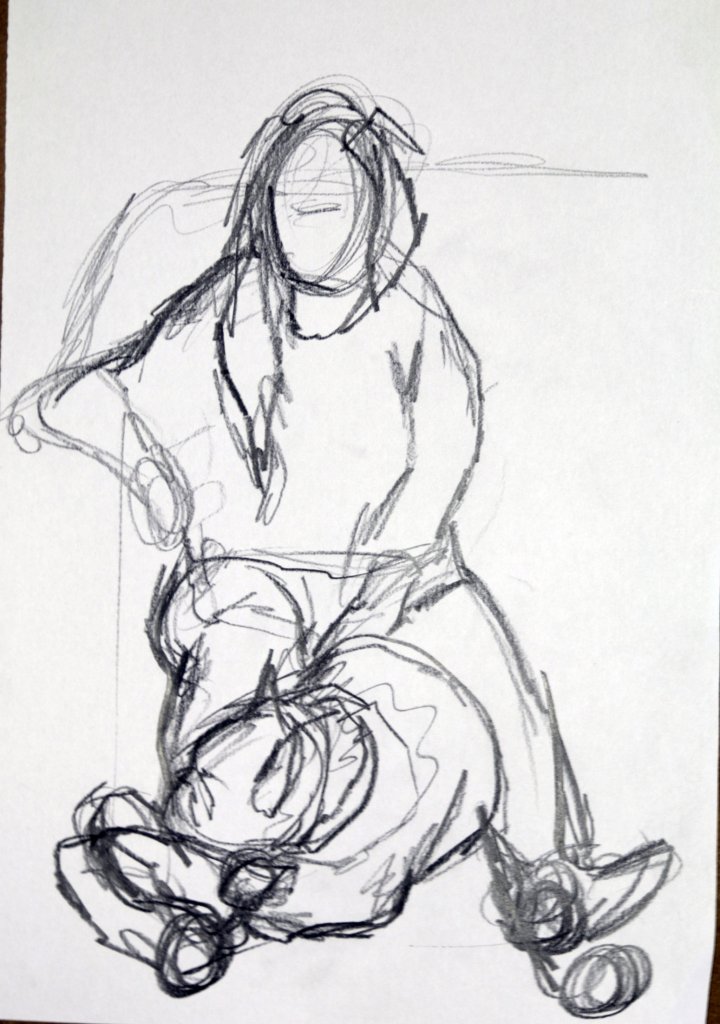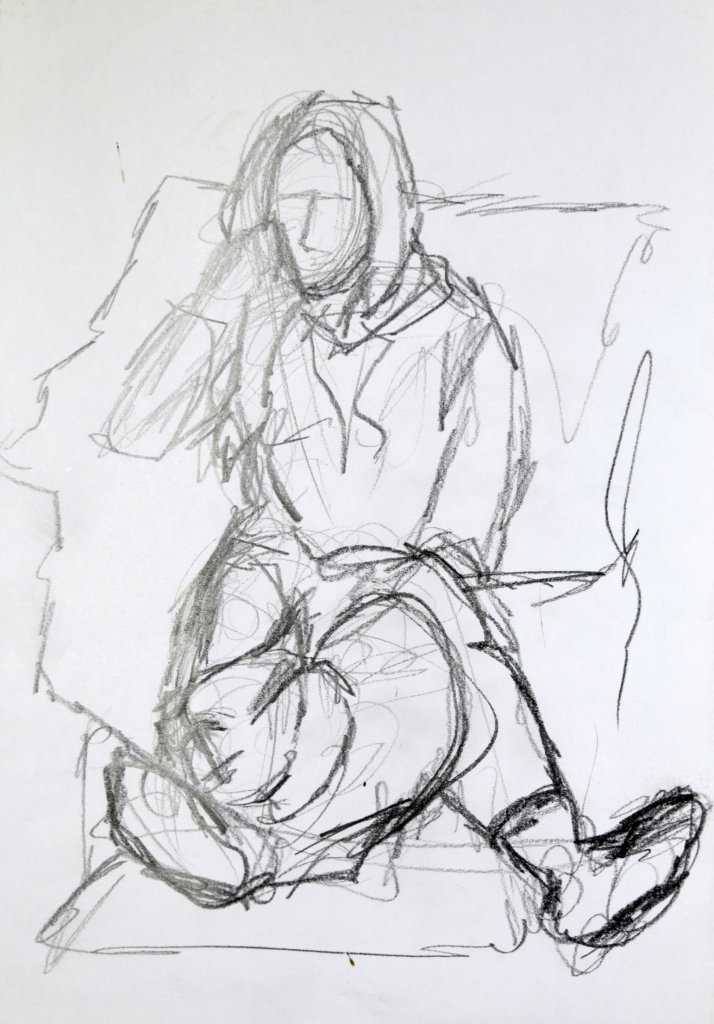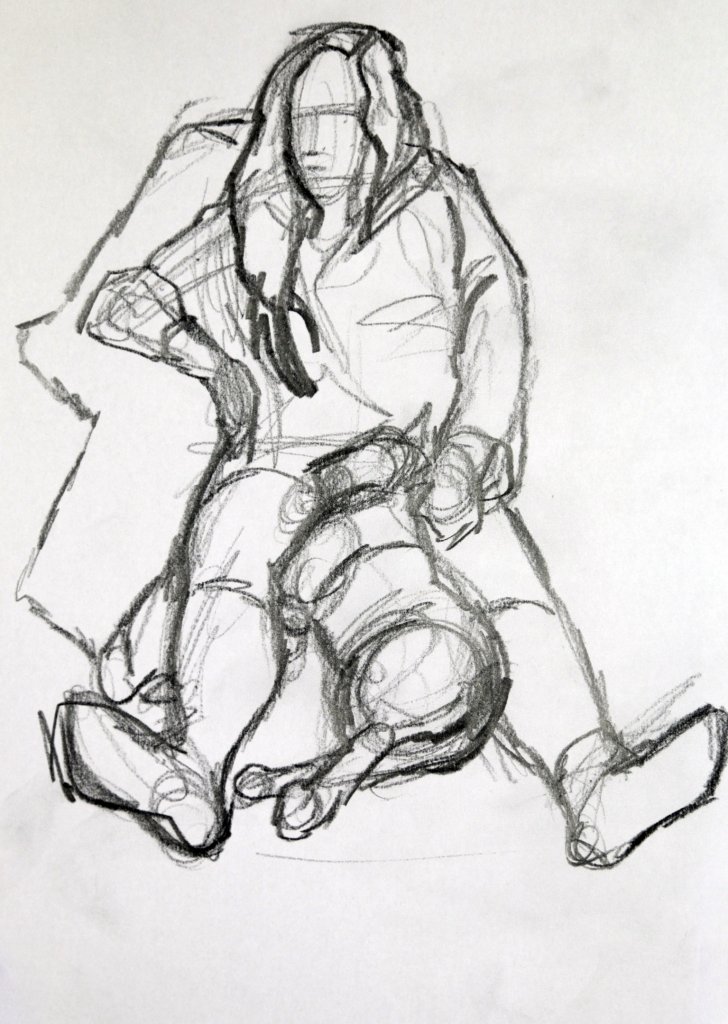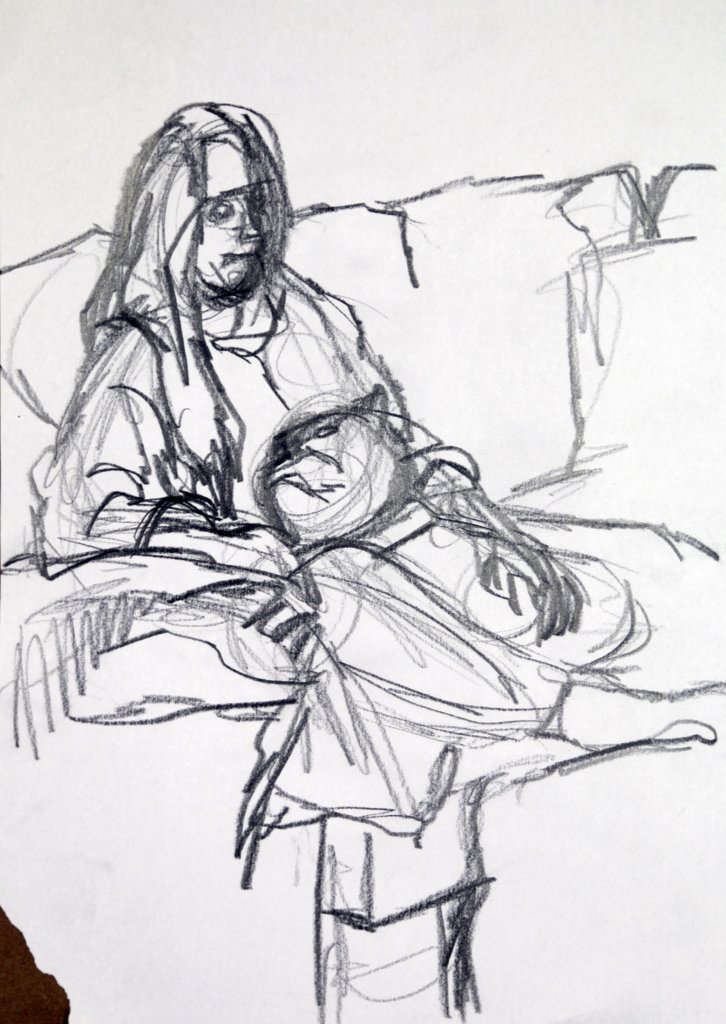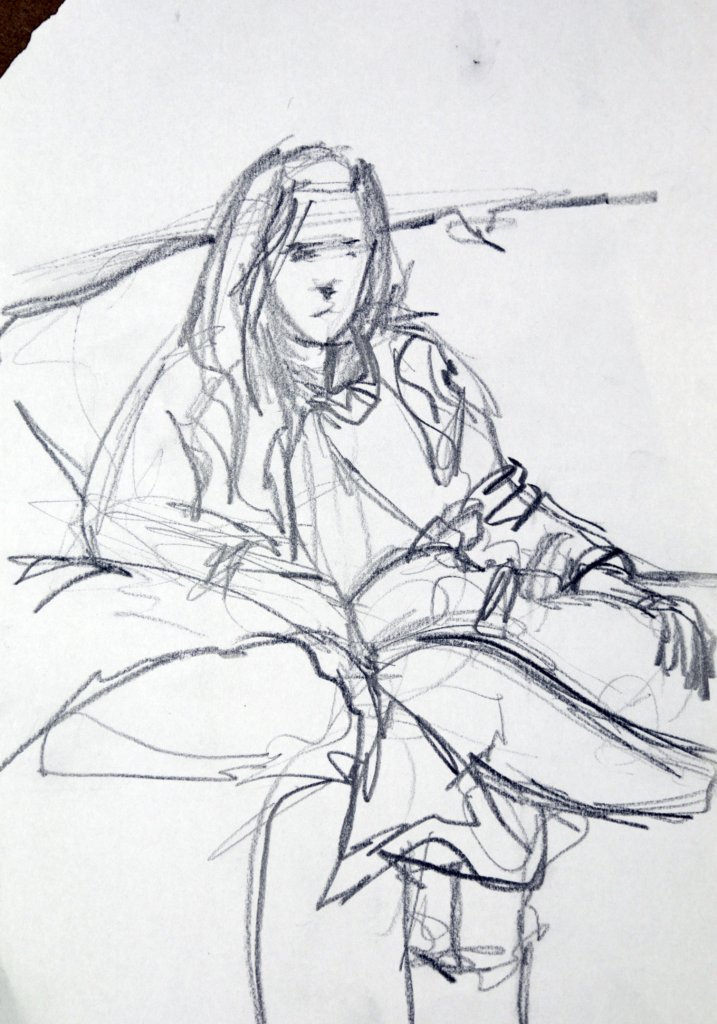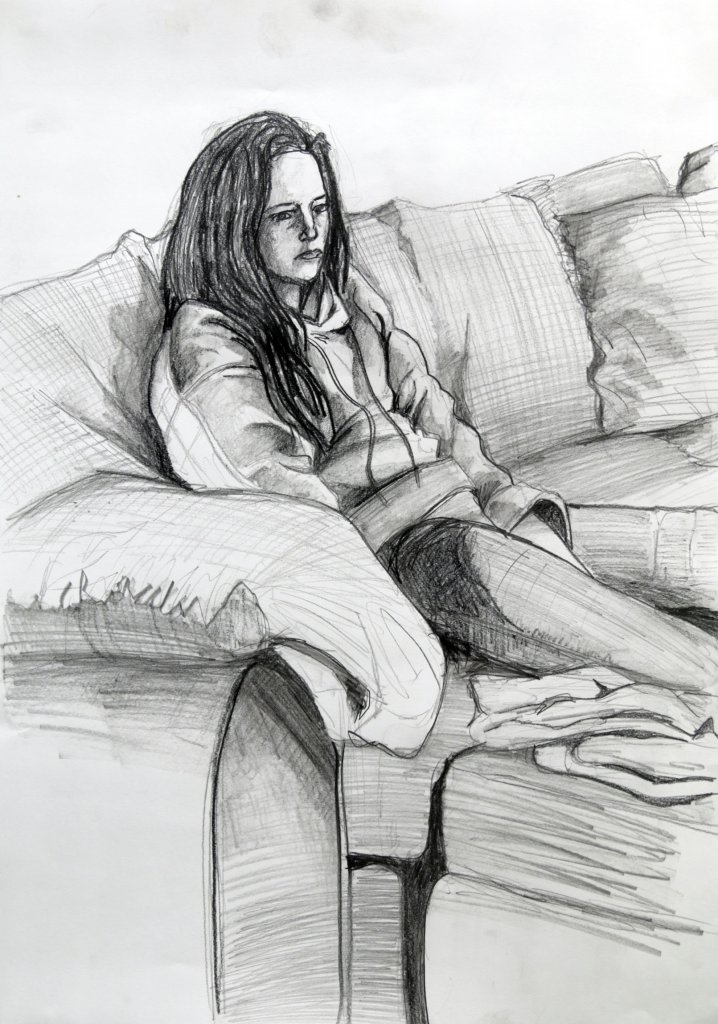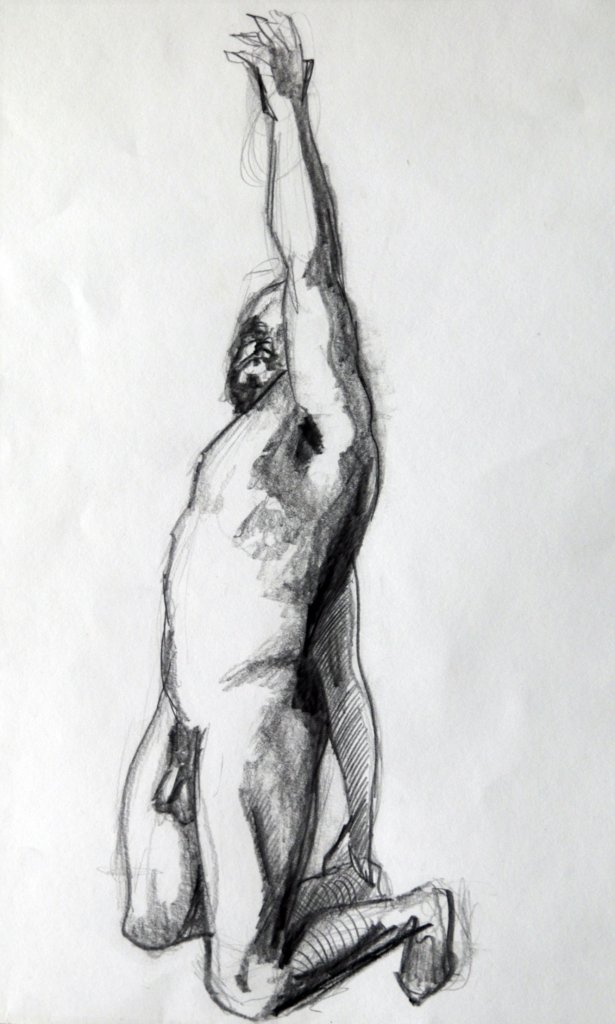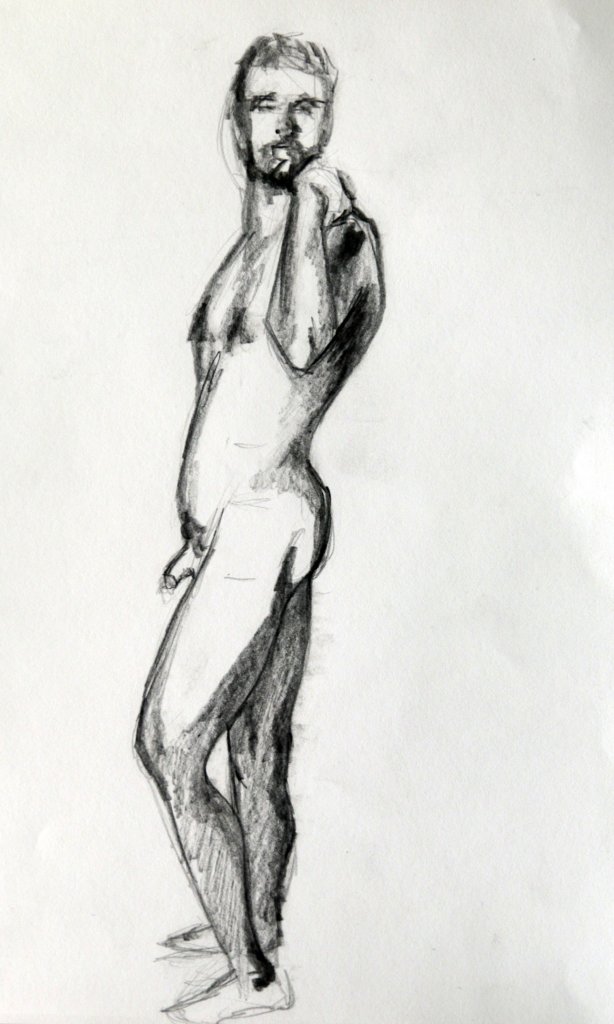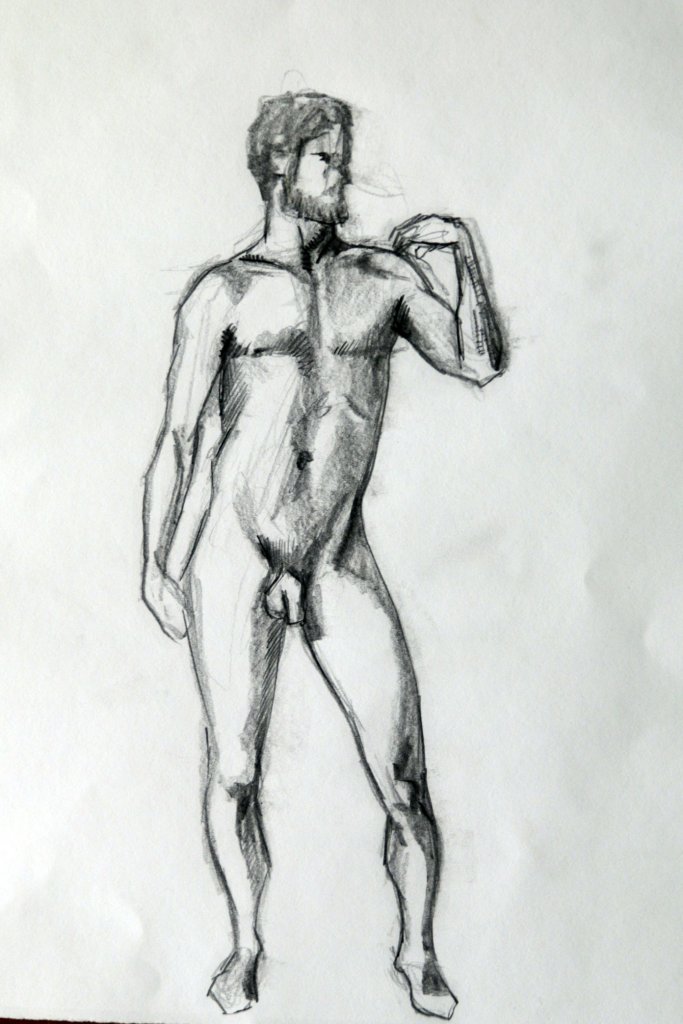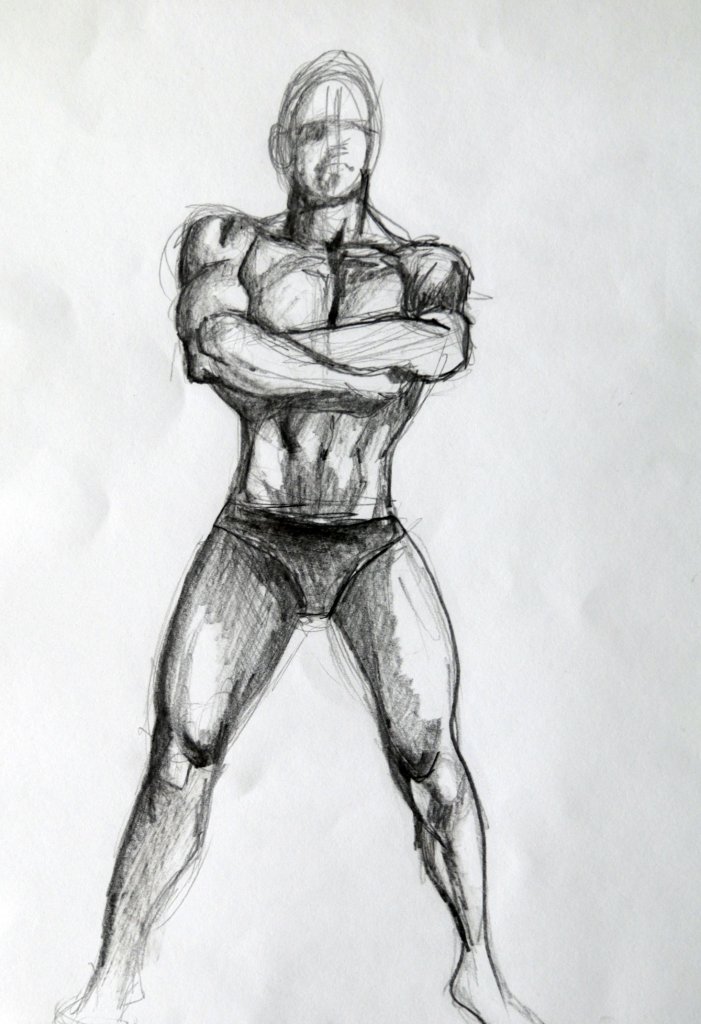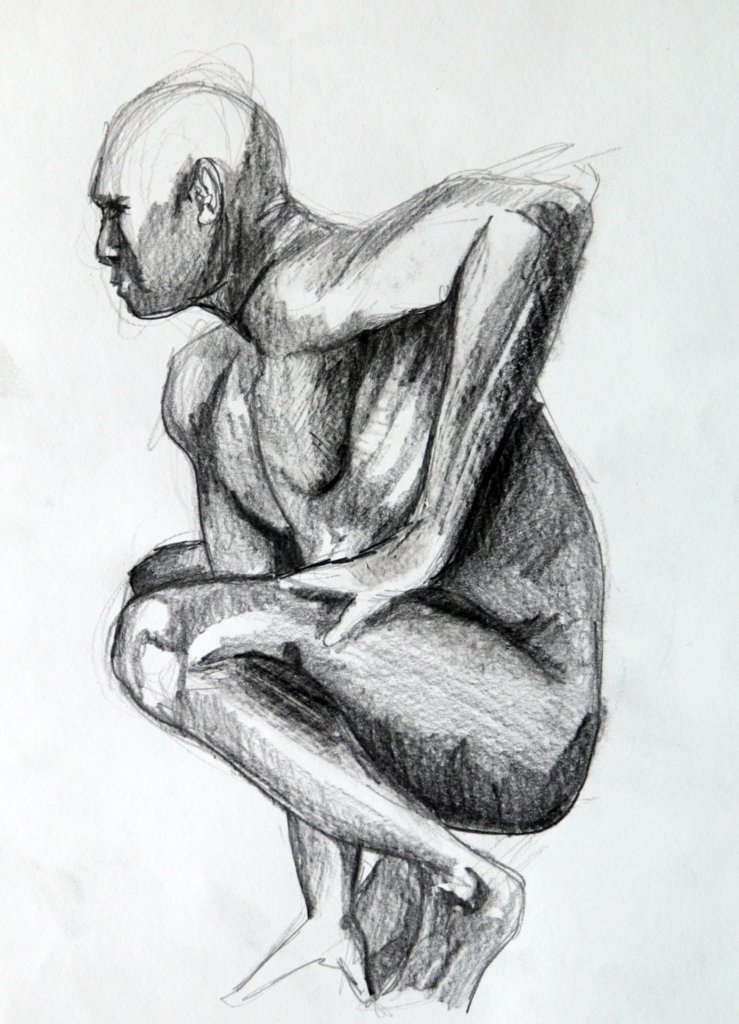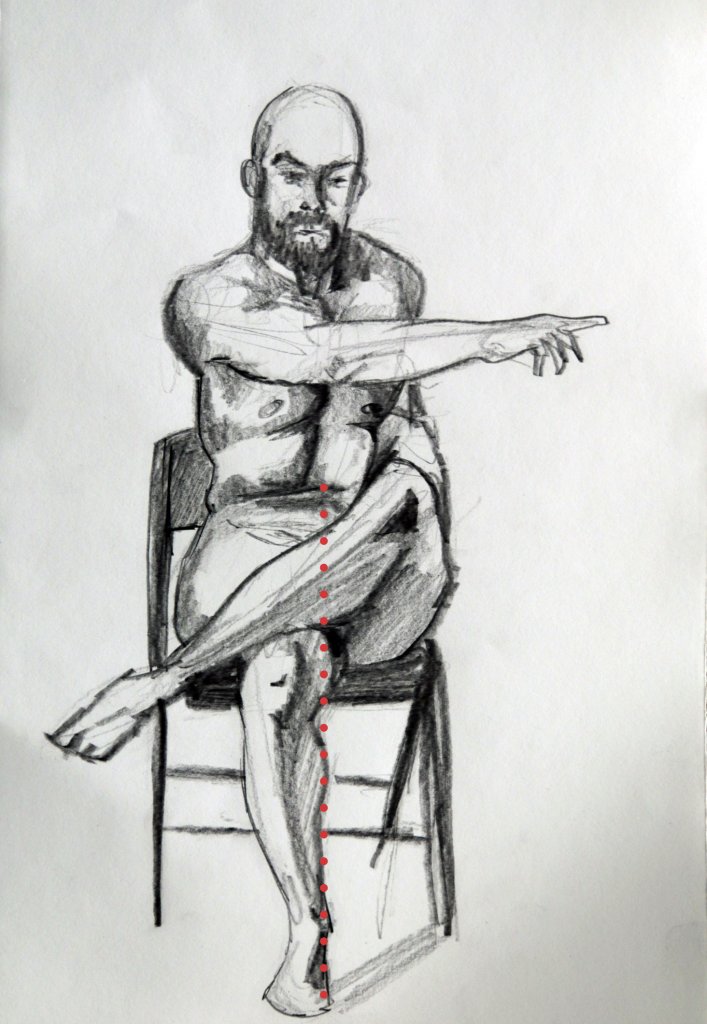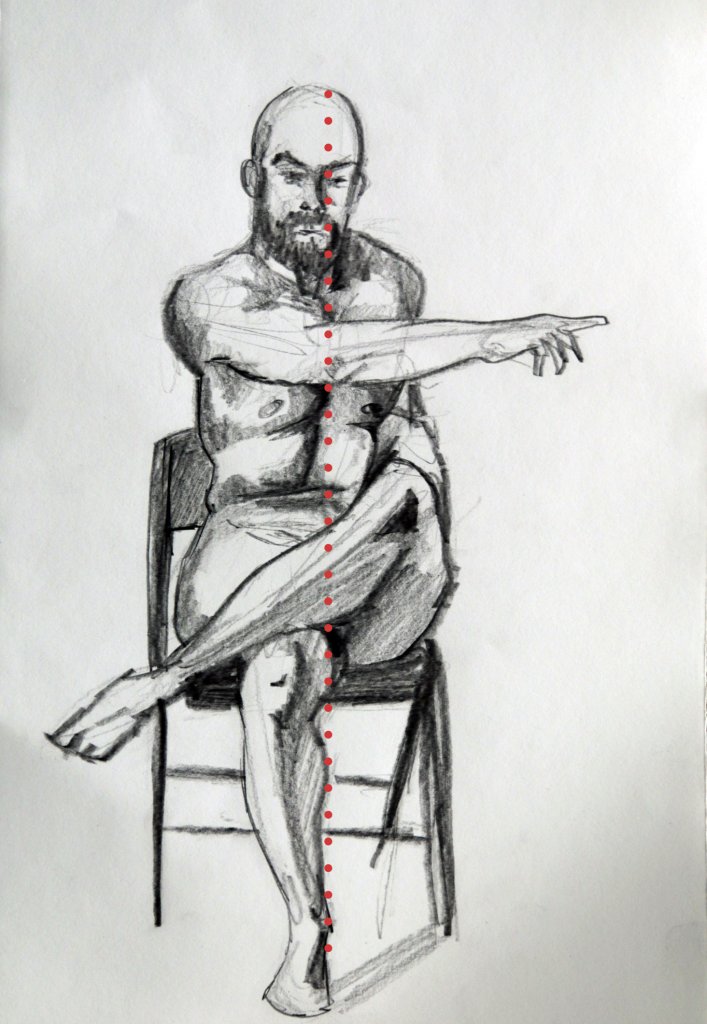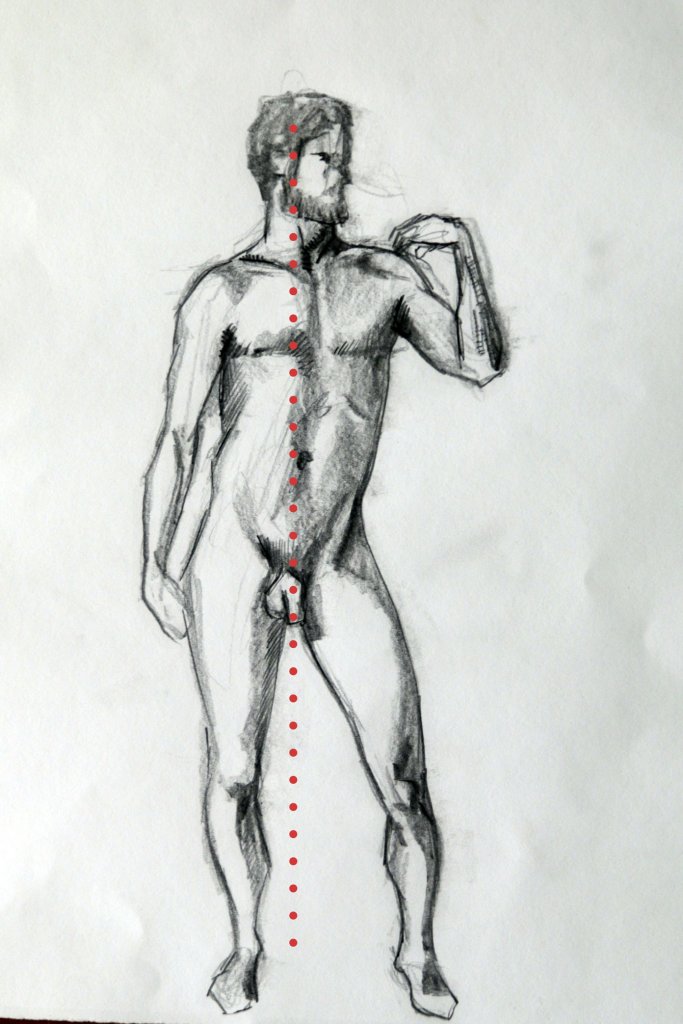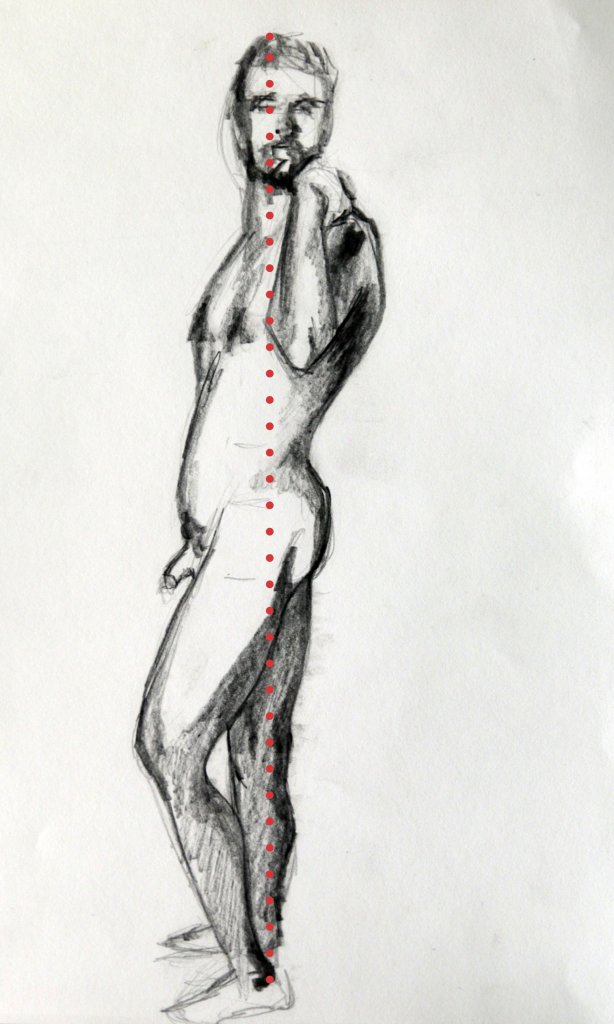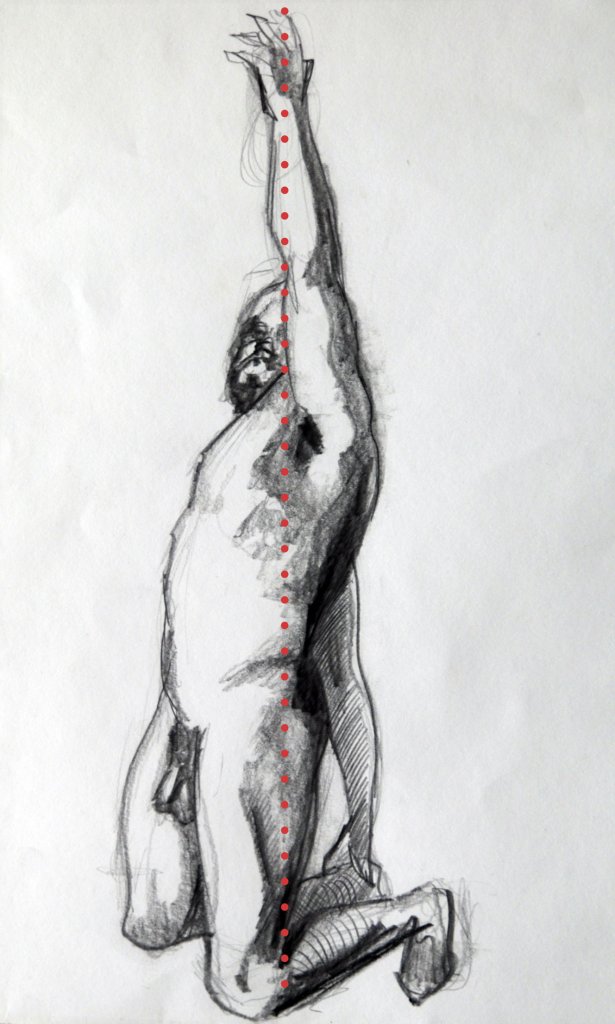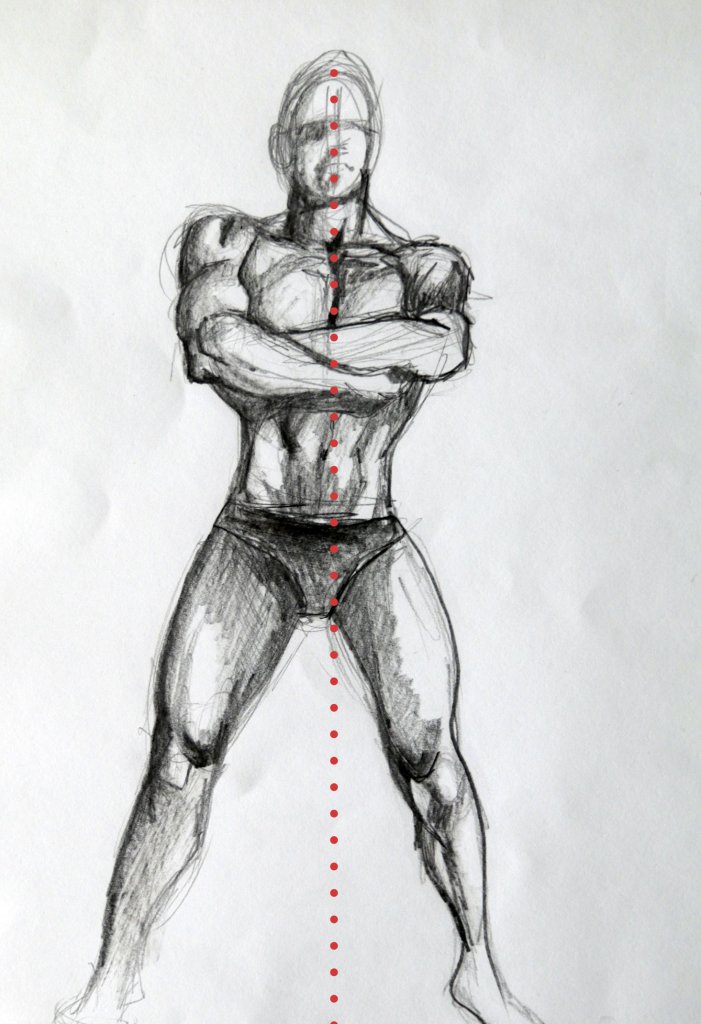This exercise called for a series of quick sketches based on a seated model. the first instruction was to familiarise myself with the pose by drawing some 2 minute sketches.
I worked with my large graphite pencil, I am increasingly leaning towards this tool for quick studies, preliminary sketches and just to capture some energy before moving on to detail. I tend to do the exact opposite of what the exercise text suggests, I don’t start from the middle but work more gesturally, I may put a curve in to suggest the forward arching torso or a bending hip, I then normally mark out my proportions for the head, and work in the rest of the gestures for the other parts of the body. I tried to change my approach to working from the middle but it was quite tricky to break my habit, I will try to force this more in my upcoming sessions, it may bring on some positive changes.
I outlined the gesture with repeated marks, trying to feel out the form and the tension points keeping the pose in one solid mass, i could see there was tension in the arms as they pull the back towards the tightly gripped hands, the pulling force opposite the arched back was really what was going to sell this image and its representation of the pose.
Pre sketch 1
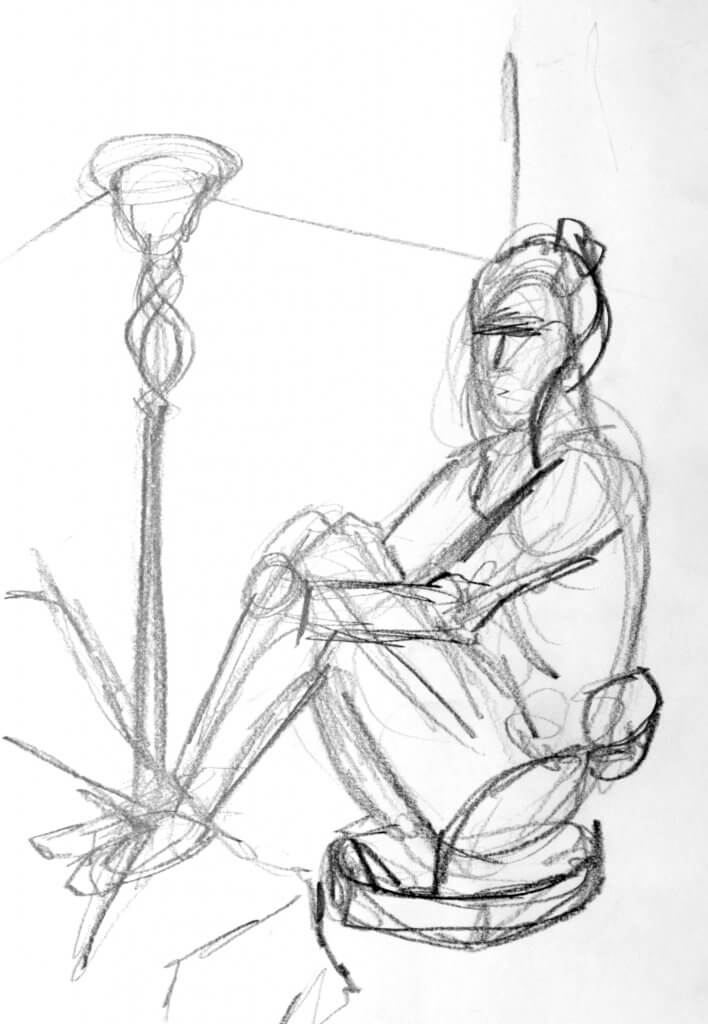
I remember my first mark on this sketch was actually a quick line to suggest the backs curvature and then an upward mark from the ankle to the knee, this first sketch while using more exploratory lines offers less impetus, the pose seems passive and relaxed, indeed the model did move slightly between the two pre sketches but i wont use that as an excuse, I want to be more mindful of the weight and direction of my lines, especially where a point of tension, or stress is involved, it stands to reason that the energy used in making my mark, will lend itself to the drawing.
Pre sketch 2
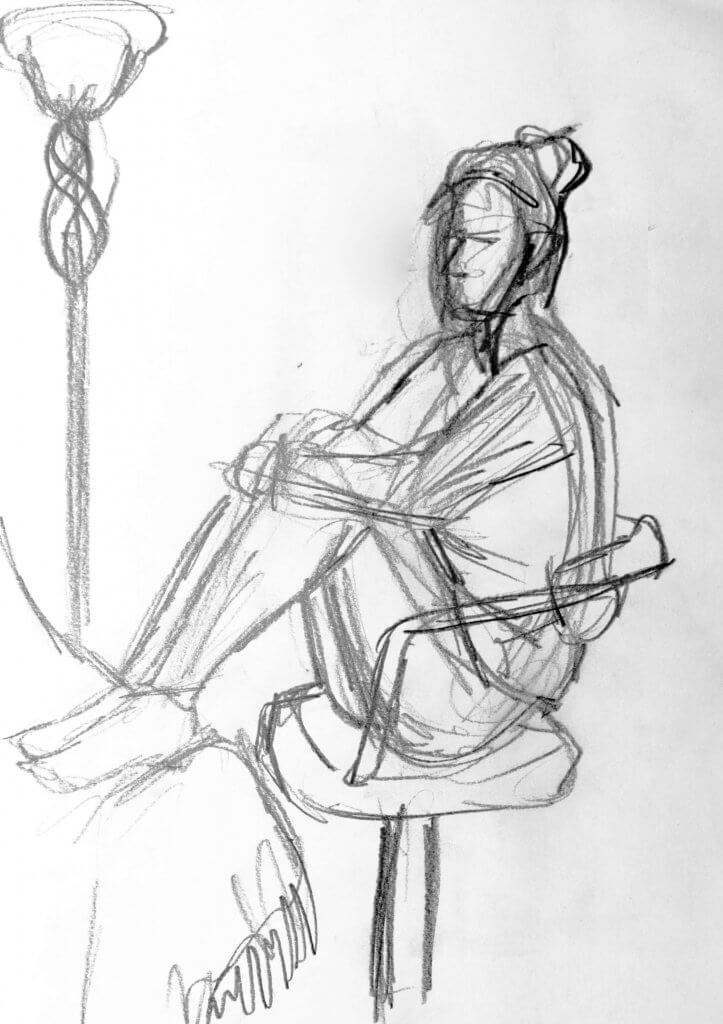
This sketch seemed to have less marks than the first, I feel it also has more information, the stretched material at the points of stress seem to offer an extra layer of tension in the pose. This could be that I have entered the correct mindset to be analytical of my subject or it could even mean that going through the motions once I have a greater understanding of the pose. I do tend to work my drawing from a sketch to refined sketch to finished piece, getting into the habit of making these preliminary sketches seemed to be most fruitful and should be incorporated more into my workflow.
10 minute drawing 1
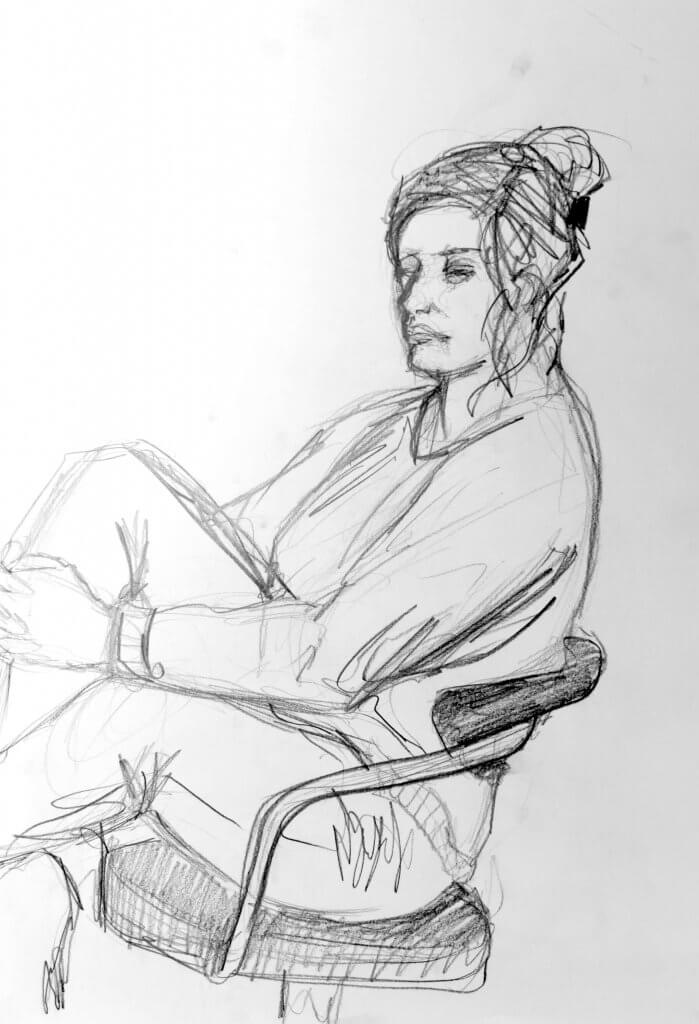
I did this larger sketch with the thick graphite pencil, again feeling the gesture and form with quick marks. it is in fact made up of two layers, a lighter tentative under drawing and then thicker strokes.
10 minute drawing 2
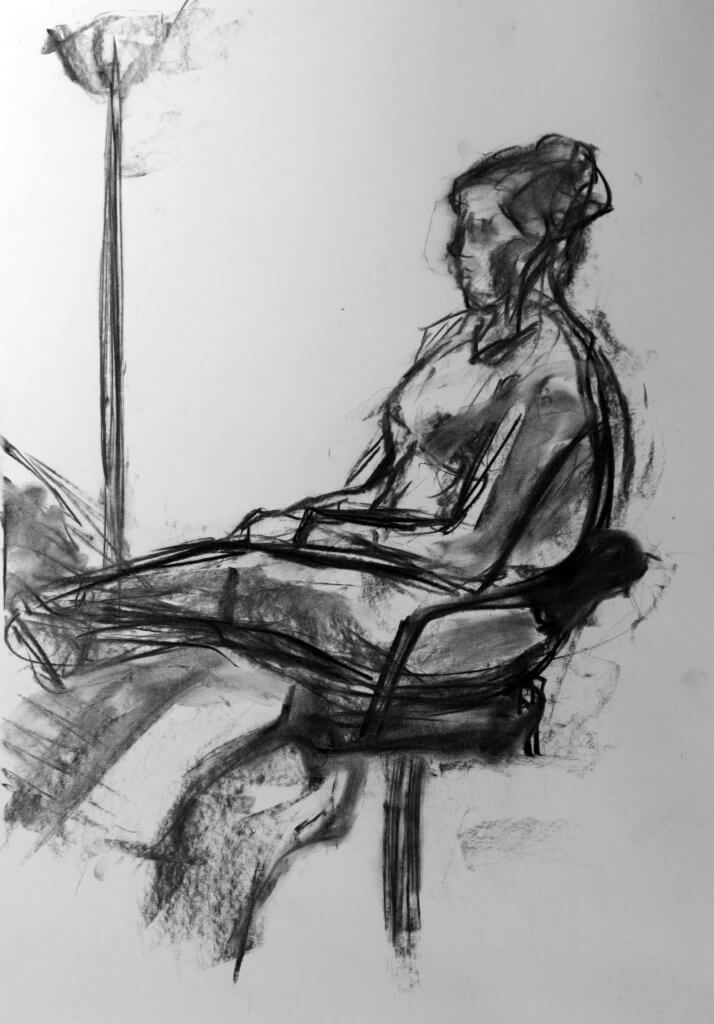
The second drawing I decided to use charcoal sticks, selecting quite a large short stick, as I wanted to deliver bolder marks with blocks of tone, the smallest lines accomplished with a flat edge. I did quite enjoy using charcoal, I don’t often use it because it is messy and cumbersome, it always looks very energetic and appealing, and seemed to fit the idea of a quick study, so seemed a suitable choice for this exercise.
I was also asked to make some other sketches with slightly adjusted poses. i wanted to try to do these with a brush pen, I suspected it would offer a good range of line weight, would be permanent and force me to correct the drawing without erasing.
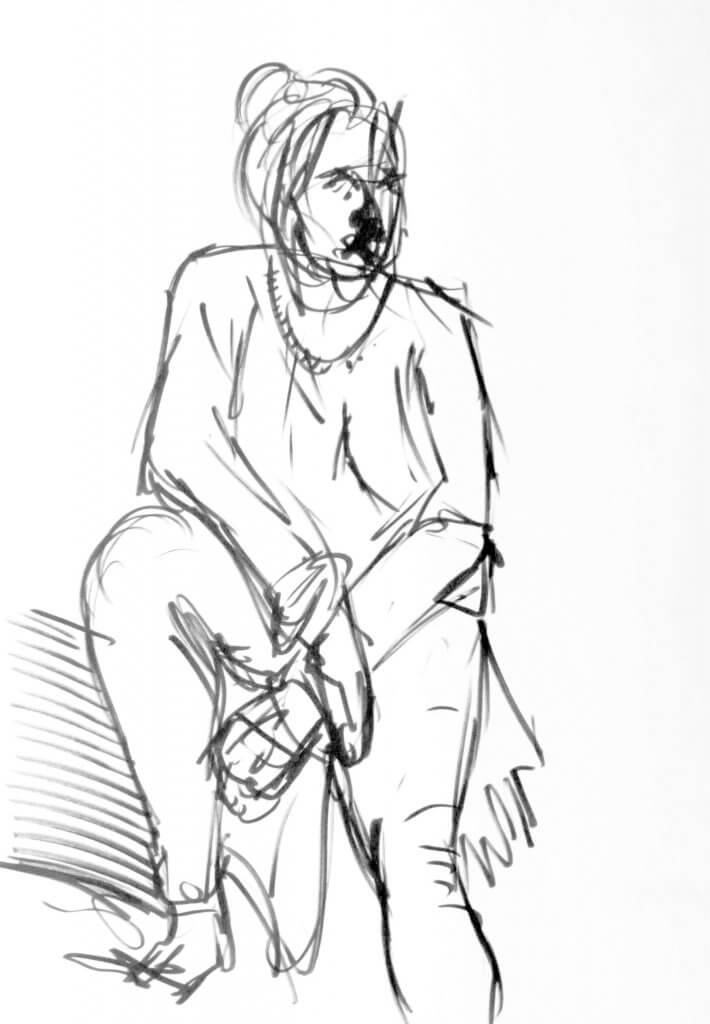
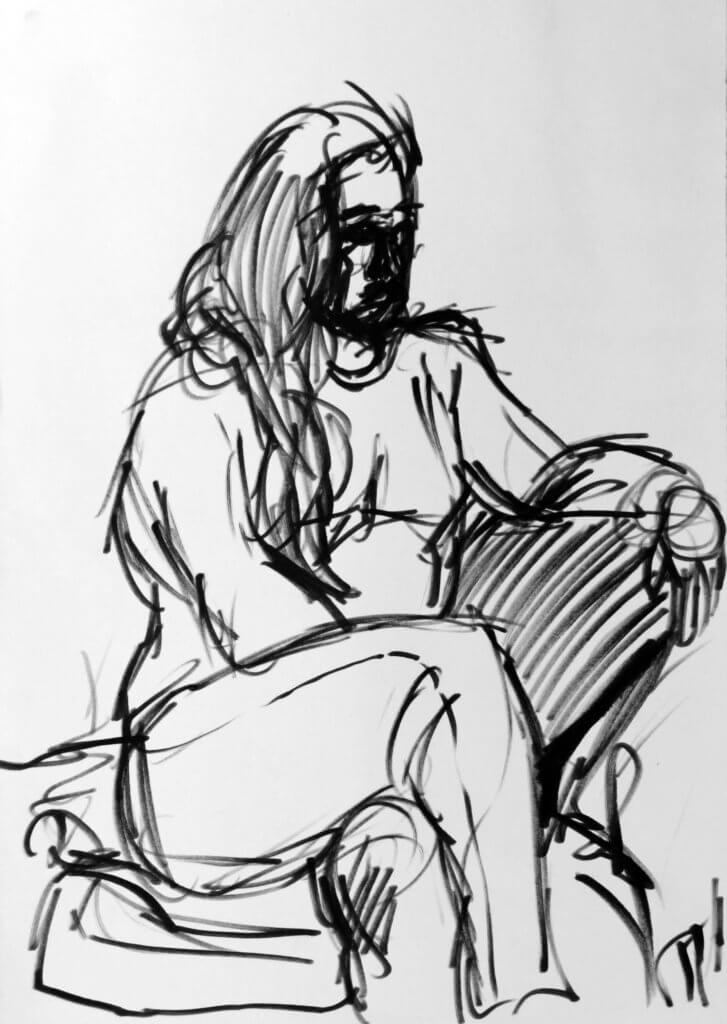
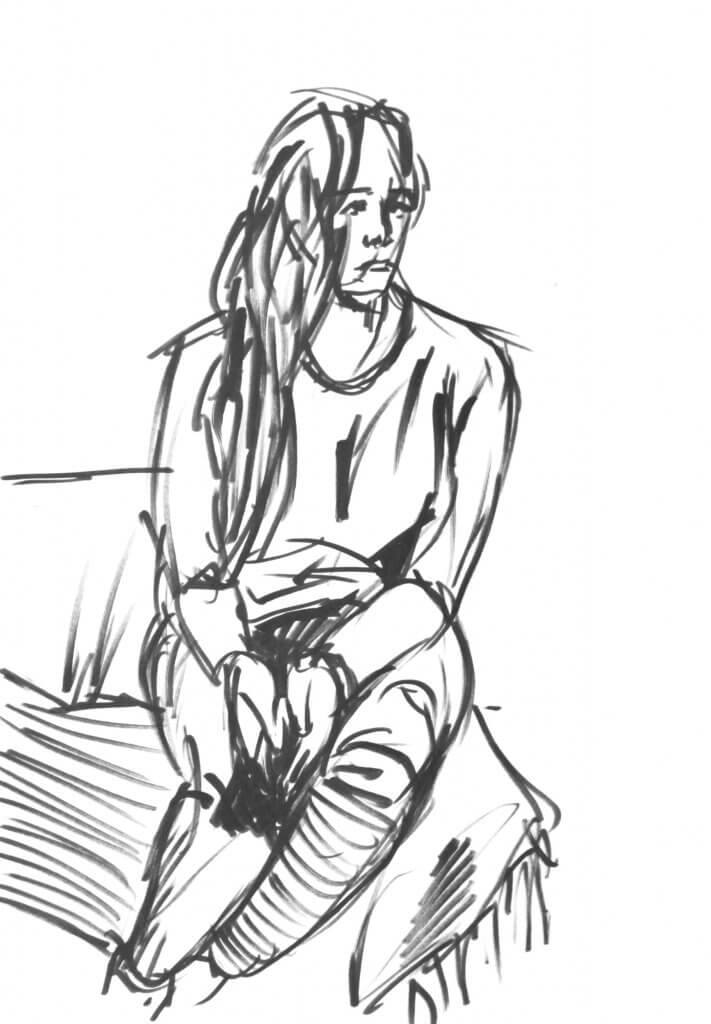
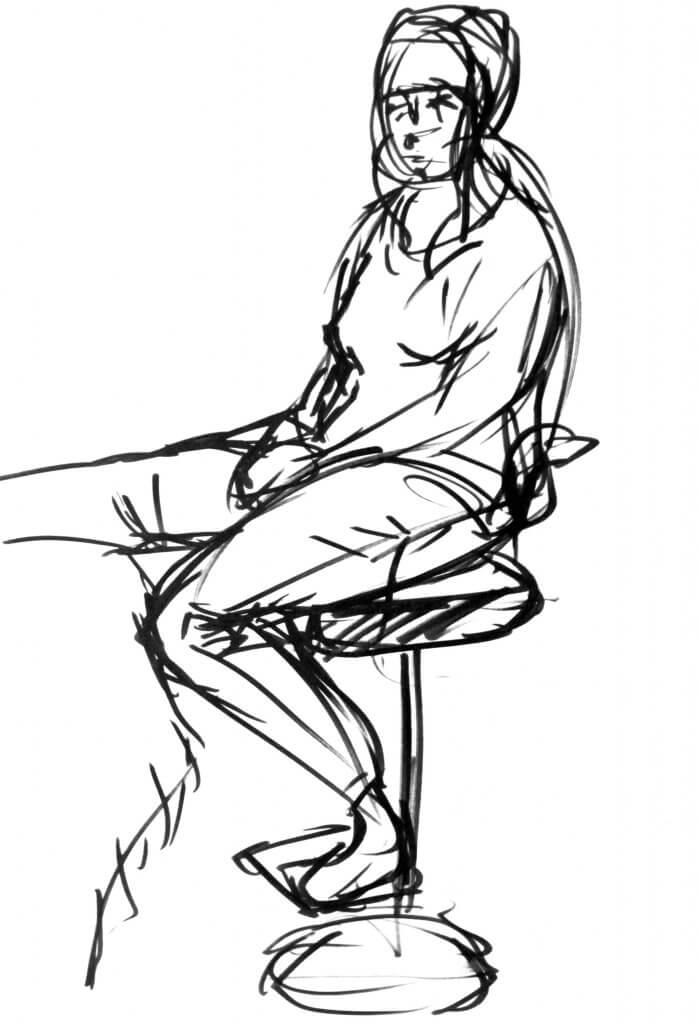
Again I enjoyed the impulsive feeling it added to the drawing, I did several of these sketches, and stuck with the brush pen, it was very liberating freely throwing lines over the drawing adjusting my pressure from hard to slight, I had a lot of fun. there was plenty of flaws in these sketches and I didn’t mind at all, they wasn’t supposed to be refined or finished, but as an exercise I felt they had served their purpose. In fact I think I some of these were indeed my favourite of the exercise.
